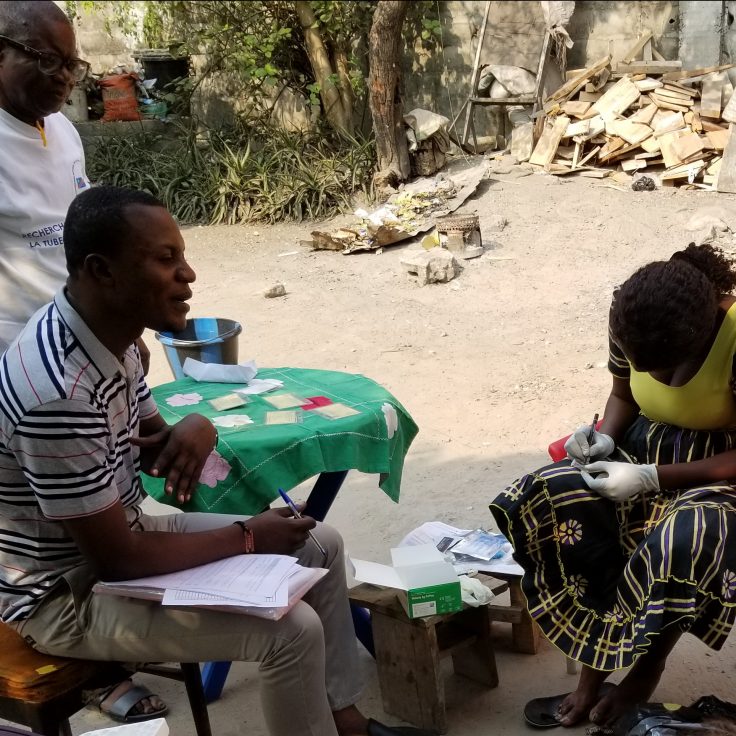
People waiting in line while maintaining social distancing during the pandemic. (Adobe Stock)
Model Shows How Masks and Social Distancing Could Control Coronavirus
While the world awaits a vaccine or effective treatment for COVID-19, a UF professor’s mathematical model has shown that the coronavirus can be controlled by non-pharmaceutical measures such as social distancing and the use of facemasks in public — but only if widely complied with and implemented for an appropriate period of time.
Assistant Professor of Mathematical Biology CALISTUS NGONGHALA is the lead author of a new study published in the journal Mathematical Biosciences that studied the efficacy of non-pharmaceutical interventions in curtailing the virus.
The researchers found that widespread use of highly effective surgical facemasks in the public could wipe out the virus, while the use of less-effective cloth masks alone could significantly reduce, but not eliminate, the impact of the pandemic. The simulations showed even better results when extensive mask-wearing was paired with strict social distancing.
“Combining interventions is more effective in controlling and mitigating the burden of the pandemic than implementing them separately,” Ngonghala said.
How long social distancing must be maintained depends on how early on it was implemented in a particular location and what portion of the population wears masks in public. The study was unambiguous on one matter, however: Ending social distancing too early could be catastrophic.
“This study shows that early termination of the strict social-distancing measures could trigger a devastating second wave of the pandemic with burden similar to those projected before the onset of the strict social-distancing measures were implemented,” the article reads.
Keeping social distancing in place through June 2020 would greatly reduce the chance of a resurgence.
The simulations show that relaxing or terminating social distancing measures without widespread mask use at the end of April 2020 would trigger this second wave, while keeping social distancing in place through June 2020 would greatly reduce the chance of a resurgence.
To completely eliminate the disease through social distancing alone, the measures would have to be in place through early March 2021 on a nationwide level and up to late September 2021 for New York State.
The study explains that the decision to relax or terminate social-distancing measures should be made by states or counties based on the prevalence COVID-19 infections and deaths, the number of tests available and the existence of local hot spots.
“The goal is to provide a tool to assist public officials, so they can see how fast they can flatten the pandemic curve and keep the number of cases and hospitalizations down, to avoid overwhelming the healthcare system and capacity,” Ngonghala said.
The study was recently featured in a roundup of research highlights released by the Washington State Department of Health, which has been faced with addressing one of the worst outbreaks in the United States.
His collaborators on the study were researchers from Arizona State University, the University of New South Wales in Australia and Harvard Medical School. Ngonghala said the team is now working on an extended second model that would measure the impact of states reopening.
In addition to social distancing and using face masks in public, the authors also examined the impact of other interventions like contact tracing, quarantine of suspected disease cases and isolation of confirmed cases.
Read the full study here.


